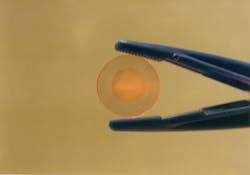Back in the early 1990s, the U.S. scientific and engineering communities started to feel the squeeze of global competition. New research development models were developed to strengthen U.S. high-tech industries, including optoelectronics and biotechnology. "Pre-competitive research"—the sharing of research results among industry competitors prior to commercialization—became the buzz word at scientific conferences and congressional briefings. However, the buzz soon faded, as many U.S. companies preferred to work independently within their industrial sectors. As the decade inched toward the new century, the push to engage in pre-competitive research diminished.
Today, with margins shrinking once again, pre-competitive research has resurfaced as a way for industries to shorten the time required to move promising research to the product phase. In a recent article, Janet Woodcock, director of FDA's Center for Drug Evaluation and Research, suggests that pre-competitive research offers the highly competitive pharmaceutical and medical device industries a way to reduce ballooning development costs.1
As bio-optics continues its expansion as a key technology in the life sciences and medicine, universities with expertise in related disciplines are looking for ways to apply that expertise to challenging problems facing the field. Two years ago, when the leadership of the Photonics Center at Boston University decided to move forward with BU's proposed Center for Biophotonics Sensors and Systems, it turned to the National Science Foundation's Industry/University Collaborative Research Centers (I/UCRC) program for help. For more than 30 years, the I/UCRC has nurtured partnerships between universities and industry. "NSF has a format and a process that helps sort through the many intellectual property issues associated with precompetitive research," says Thomas Dudley, assistant director of BU's Photonics Center.
Developing integrated solutions
The proposed biosensors center, which is being established in cooperation with the University of California, Davis, will initially focus on disease diagnosis, drug efficacy testing, patient monitoring, and food and water safety. Technologies used in these areas will include biospectroscopy, super-resolution microscopy, and adaptive compensation bioimaging. "We believe that for many diseases, photonics is the best approach to understanding their pathogenesis," says Dudley. "BU has a strong program in transferring research to Department of Defense applications, and we wanted to apply that knowledge to clinical applications."
Because the BU biosensors proposal addresses key areas NSF looks for when reviewing applications relevant to industry needs, contributes to the U.S. research infrastructure and provides opportunities for workforce advancement, it has a good shot at funding. The proposal is currently undergoing review and if it is recommended for funding, the center will launch this spring with eight industrial members. Additional members will be added as the center grows.
Industry plays a central role in designing the center's research agenda. The inaugural research projects are the result of an NSF-led brainstorming session, in which industry members had significant input in designing projects aligned with their needs. "The problems facing industry are not isolated. They require integrated solutions," says Dudley. "Companies like the idea of bringing a number of different disciplines to a problem."
Shared results
To conduct research the center will likely use two models. Core center research will create a portfolio of pre-competitive technologies that will be shared by the center's industry partners, who range from end users such as biotech and pharmaceutical firms, equipment manufacturers, and suppliers. Directed research outside this shared portfolio will allow individual partners to tailor university activities to their specific needs.
The structured sharing of research is also attractive to industrial members. Intellectual property issues are handled through a number of mechanisms so that all members have an opportunity to benefit from research performed through the center. Any work performed within the center is accessible to members in the form of nonexclusive, royalty-free rights. For members interested in exclusive rights, agreements are available to license the work.
One of the unique features of the program is the high leverage of government dollars. In fiscal year 2009, NSF's 56 I/UCRC centers spun the foundation's $11 million investment into $70 million. In addition, the partnerships between universities and industry foster opportunities for graduate students through internships and jobs.
An industry perspective
Since the I/UCRC format offers a number of opportunities for industry and faculty to collaborate, industrial partners see the proposed biosensors center as a value to industry. Thorlabs President Alex Cable, who signed on as an industry partner with the biosensors center, says the center is "a unique model which allows us to help shape a research agenda and have some well-defined ground rules that allow us to better anticipate and enjoy potential commercial benefits. It is a new approach to removing barriers that might not come down otherwise."
Building partnerships and sharing the cost of funding research for key technical issues produces "a whole set of future possibilities," says Cable. "Through the center, we can reduce the distance between the output of research and the uptake of a product."
REFERENCE
1. J. Woodcock, Clin Pharmacol Ther. 87: 521-523 (2010).

